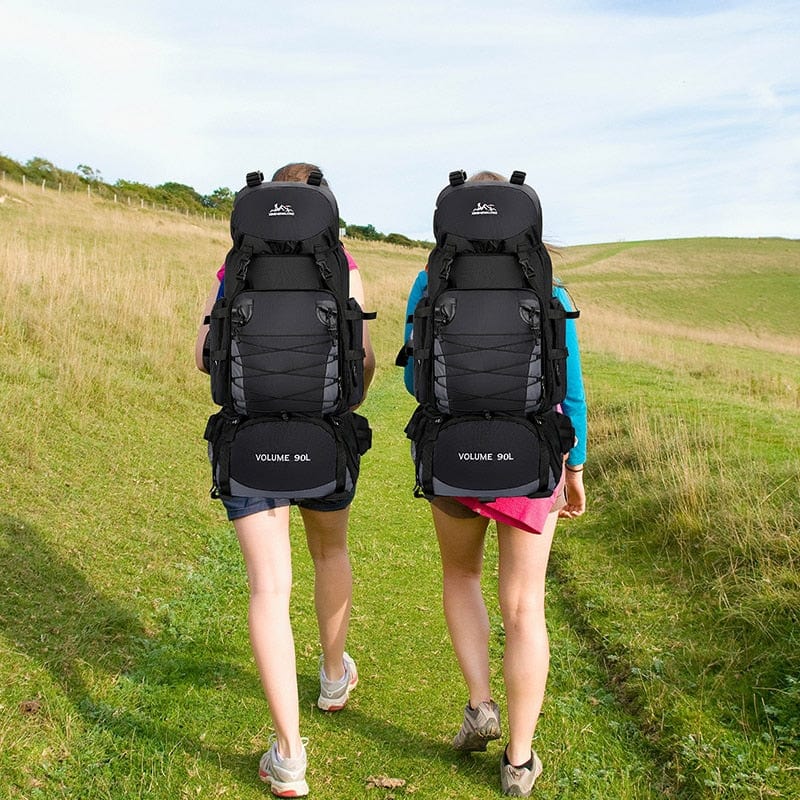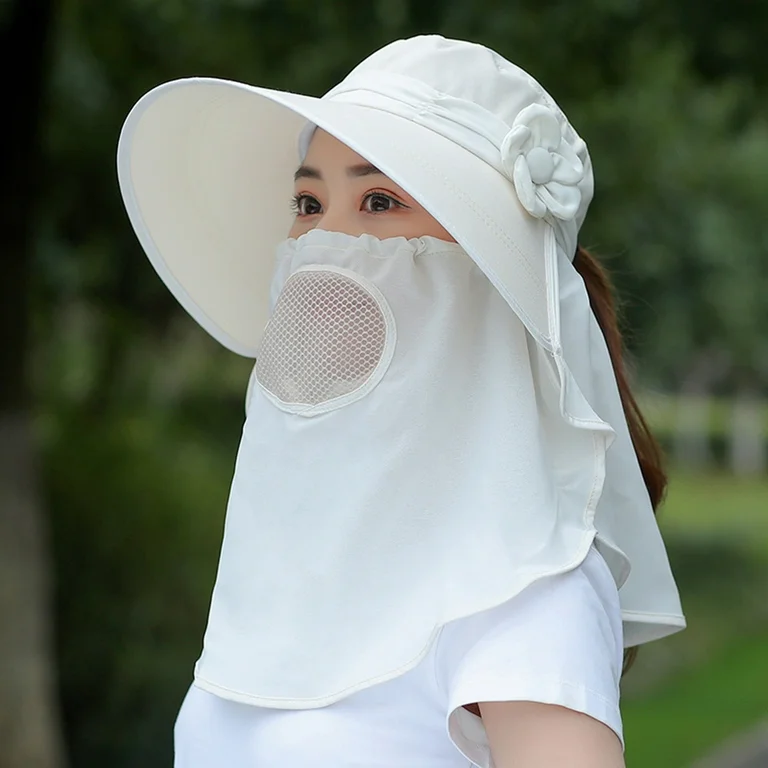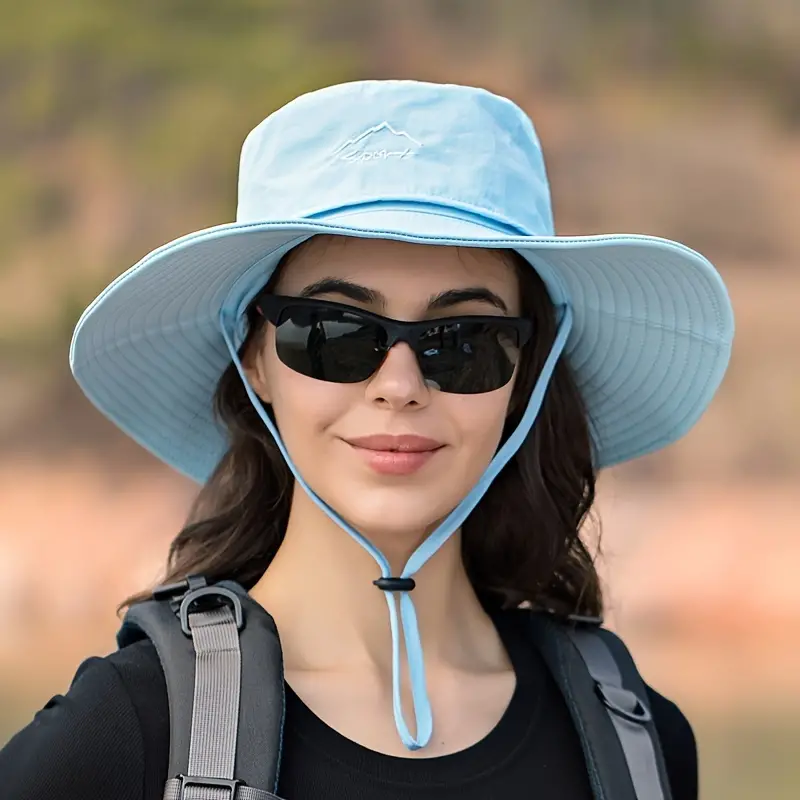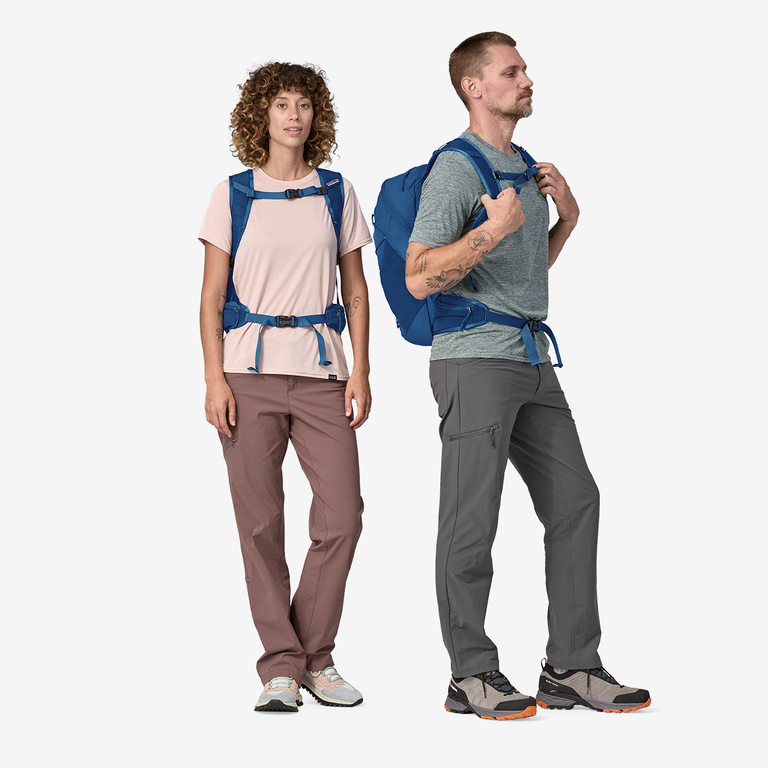I. Introduction

A. Importance of proper clothing for summer hiking
As the temperatures rise and the sun shines bright, many people eagerly take to the great outdoors to enjoy the beautiful summer weather. For those who enjoy hiking, the summer months provide the perfect opportunity to explore nature and take in breathtaking views. However, it’s important to remember that the summer heat can pose challenges for hikers, especially when it comes to staying cool and comfortable on the trails. One of the key factors in successfully navigating summer hikes is choosing the right summer hiking clothes. Proper summer hiking clothes can make all the difference in ensuring a pleasant and enjoyable hiking experience.
B. Purpose of the blog
The purpose of this blog is to provide valuable information and tips on selecting the best clothing for summer hiking. We will explore the importance of fabric selection, as well as the specific features and characteristics to look for when choosing hiking attire for hot weather. By understanding the principles of fabric technology and the benefits of certain materials, hikers can make informed choices that will enhance their comfort and enjoyment on the trails.
II. Fabric Selection
A. Breathable and moisture-wicking fabrics
When it comes to summer hiking, staying cool and dry is essential. This is why choosing summer hiking clothes made from breathable and moisture-wicking fabrics is crucial. Breathable fabrics allow air to flow through the material, preventing overheating and excessive sweating. Moisture-wicking fabrics pull sweat away from the skin and towards the outer surface of the fabric, where it can evaporate more quickly. This dual combination of breathability and moisture-wicking properties helps to keep hikers comfortable and prevents the build-up of sweat and moisture on the skin.
Some popular choices for breathable and moisture-wicking fabrics include synthetic materials such as polyester and nylon, as well as natural fibers like merino wool. These fabrics are engineered to promote airflow and efficiently manage moisture, making them ideal for summer hiking in warm and humid conditions.
B. UV protection and quick-drying materials
In addition to breathability and moisture-wicking properties, summer hiking clothing should also offer UV protection and quick-drying capabilities. The sun’s rays can be intense during the summer months, and prolonged exposure to harmful UV radiation can lead to sunburn and skin damage. Therefore, choosing clothing with built-in UV protection, such as UPF-rated fabrics, can help to shield hikers from the sun’s harmful effects.
Furthermore, quick-drying materials are essential for summer hiking, especially in the event of unexpected rain showers or crossing streams. Summer hiking clothes that dries quickly helps to prevent discomfort and chafing, allowing hikers to stay active and continue their journey without being weighed down by wet, heavy garments.
C. Lightweight and durable options

When it comes to summer hiking, lightweight and durable summer hiking clothes is a must. Hikers need garments that offer protection and performance without adding unnecessary bulk or weight. Lightweight fabrics, such as nylon and polyester, are ideal for summer hiking as they provide the necessary coverage and functionality without feeling heavy or restrictive.
Additionally, durability is an important factor to consider when choosing hiking clothing. The rugged terrain and abrasive elements encountered on the trails can put clothing to the test. Therefore, selecting garments made from durable materials and construction techniques ensures that they can withstand the demands of summer hiking and hold up to the rigors of the outdoors.
III. Clothing Items
A. Moisture-wicking T-shirts
When it comes to summer hiking, choosing the right shirts is vital for maintaining comfort and preventing moisture build-up. Moisture-wicking T-shirts are a popular choice among hikers, as they are designed to draw sweat away from the body, helping to keep the skin dry and cool. These shirts are typically made from synthetic materials such as polyester or nylon, which are specifically engineered to facilitate the evaporation of sweat. Additionally, some moisture-wicking T-shirts also feature mesh panels for increased breathability and ventilation, making them ideal for hot and humid conditions.
B. Convertible hiking pants
Convertible hiking pants, also known as zip-off pants, are a versatile and practical option for summer hiking. These pants feature zip-off legs, allowing hikers to easily convert them into shorts when the weather heats up. The ability to switch from pants to shorts provides hikers with adaptability and convenience, particularly when encountering varying temperatures and terrain. Additionally, convertible hiking pants are often crafted from lightweight and quick-drying materials, making them a popular choice for summer outdoor activities.
C. Sun hats and sunglasses
Protecting oneself from the sun’s harsh rays is crucial during summer hiking expeditions. Sun hats with wide brims offer valuable shade for the face, neck, and ears, helping to safeguard against sunburn and heat exposure. Look for hats made from lightweight and breathable materials, as well as those with built-in UPF protection for added sun defense. Similarly, sunglasses are an essential accessory for protecting the eyes from UV radiation. Opt for sunglasses that provide 100% UV protection and feature polarized lenses to reduce glare and enhance visibility on the trails.
D. Hiking socks
Choosing the right socks is just as important as selecting the appropriate footwear for hiking. Hiking socks are designed to provide cushioning, support, and moisture management, helping to prevent blisters and discomfort during long treks. Look for socks made from merino wool or synthetic blends, as they offer excellent moisture-wicking properties and can help regulate foot temperature. Additionally, consider the height and thickness of the socks based on personal preference and the specific demands of the hiking terrain.
E. Lightweight rain jacket
Even in the summer months, unexpected rain showers can occur during outdoor adventures. Packing a lightweight and packable rain jacket is a wise decision to stay prepared for inclement weather. Look for jackets that are constructed from waterproof and breathable materials, such as Gore-Tex or other similar membranes. These jackets provide protection from rain while allowing body heat and moisture to escape, keeping hikers dry and comfortable in adverse conditions.
IV. Footwear

A. Hiking boots vs hiking shoes
Choosing the right footwear is essential for ensuring comfort, support, and protection during summer hikes. When it comes to selecting between hiking boots and hiking shoes, hikers should consider the terrain, load, and personal preferences. Hiking boots provide excellent ankle support, stability, and protection, making them suitable for rugged and challenging terrains. On the other hand, hiking shoes are lighter, more flexible, and offer greater breathability, making them a preferred choice for lighter loads and less demanding trails. Ultimately, the choice between hiking boots and shoes depends on the specific needs of the hike and the individual hiker.
B. Proper fitting and support
Regardless of whether hikers choose boots or shoes, proper fitting is essential for optimal comfort and performance. Ill-fitting footwear can lead to blisters, discomfort, and even injuries during hiking expeditions. When trying on hiking footwear, hikers should ensure there is ample room for toe movement, a snug fit around the heel, and adequate support for the arches and ankles. Additionally, consider using insoles or custom orthotics for enhanced support and cushioning, especially for longer hikes and uneven terrains.
C. Breathable and waterproof options
During summer hiking, it’s important to consider the breathability and waterproof capabilities of footwear. Breathable materials such as mesh panels and moisture-wicking linings help to promote airflow and prevent the build-up of sweat and moisture inside the shoes. Waterproof technologies such as Gore-Tex membranes provide protection from water and moisture while allowing feet to breathe, making them a valuable feature for traversing wet or unpredictable conditions.
V. Layering Tips
When it comes to summer hiking, understanding the principles of layering can significantly enhance comfort and adaptability for hikers. Proper layering allows hikers to manage moisture, regulate body temperature, and protect themselves from the elements, ultimately ensuring a more enjoyable and successful hiking experience. Here are essential layering tips to consider for summer hiking:
A. Base layer for moisture control
The base layer serves as the foundation of the layering system and is responsible for managing moisture and maintaining comfort against the skin. For summer hiking, selecting a moisture-wicking base layer is crucial to wick sweat away from the body and promote efficient evaporation. Moisture-wicking base layers are typically made from synthetic materials, merino wool, or blends that excel in managing perspiration. They should fit snugly against the skin without being restrictive, allowing for optimal moisture transfer and temperature regulation.
B. Insulating layer for temperature regulation
The insulating layer provides warmth and regulates body temperature by trapping heat close to the body. During summer hikes, the insulating layer should be lightweight, breathable, and easily adjustable to accommodate fluctuating temperatures. Consider wearing a lightweight fleece or a synthetic insulated jacket that offers warmth without adding excessive bulk or weight. Additionally, opt for insulating layers with ventilation features such as underarm zippers to enhance breathability and aid in thermoregulation during strenuous activities.
C. Outer layer for protection from the elements
The outer layer, also known as the shell layer, is essential for shielding hikers from wind, rain, and other external elements. For summer hiking, the outer layer should be lightweight, packable, and offer protection from sudden rain showers, strong winds, and UV radiation. Look for outer layers constructed from waterproof and breathable materials, such as Gore-Tex or similar membranes, to ensure effective protection without causing overheating or moisture build-up. Additionally, consider features such as adjustable hoods, ventilation openings, and durable water repellent (DWR) coatings for added versatility and weather resistance.
By carefully coordinating and layering base, insulating, and outer layers, hikers can effectively manage moisture, regulate body temperature, and stay protected from the elements during their summer hiking expeditions. Understanding the role of each layer and selecting appropriate garments will enhance comfort, performance, and adaptability, enabling hikers to fully enjoy the beauty of nature while staying prepared for the challenges of the outdoors.
In conclusion, choosing the right summer hiking clothes for summer hiking is essential for staying comfortable, protected, and capable on the trails. By selecting fabrics that are breathable, moisture-wicking, UV-protective, quick-drying, lightweight, and durable, hikers can confidently tackle the challenges of summer hiking with ease. With the right apparel, hikers can fully enjoy the beauty of nature while staying cool, dry, and protected throughout their outdoor adventures.
